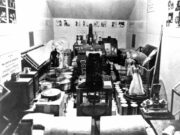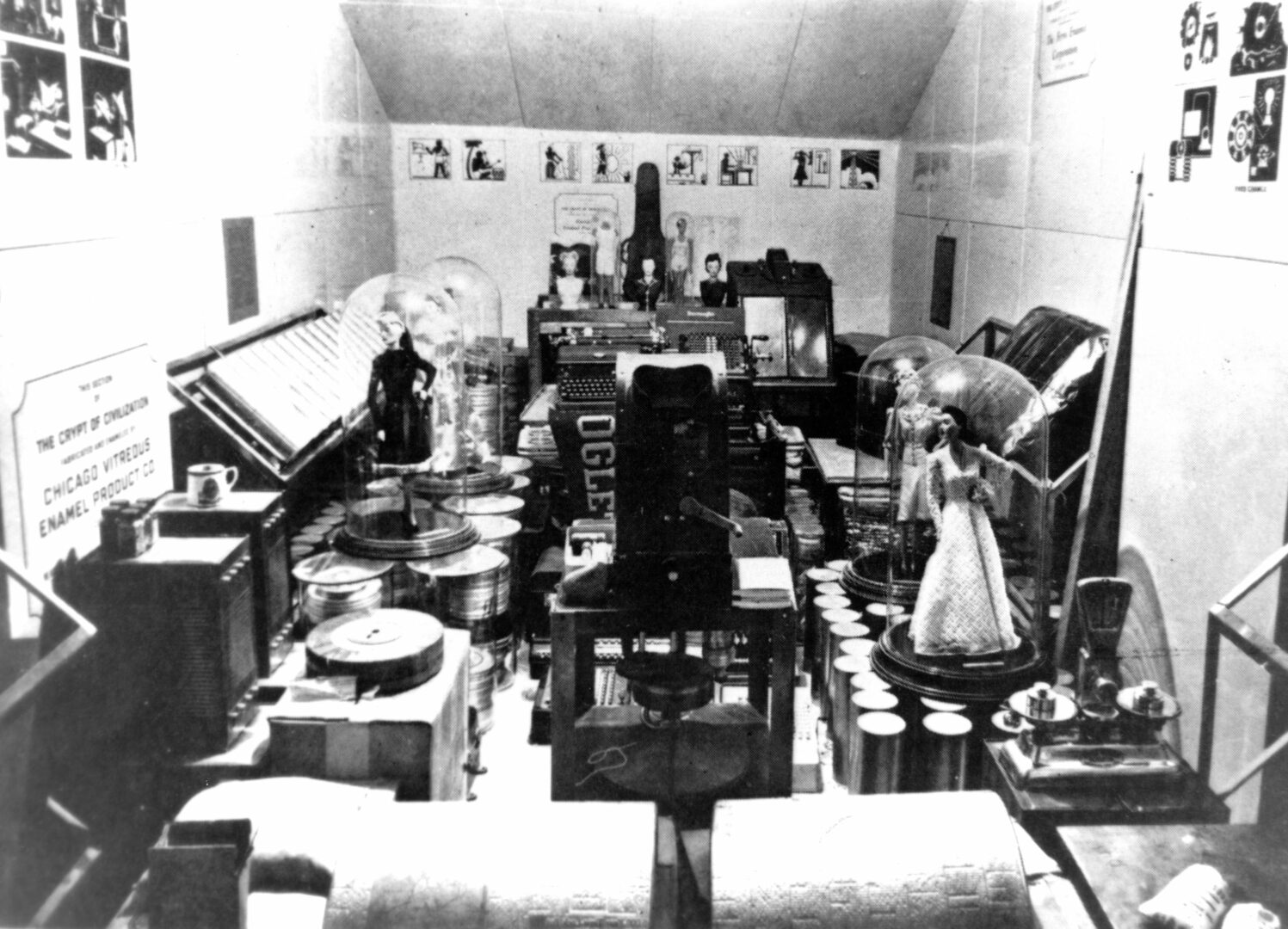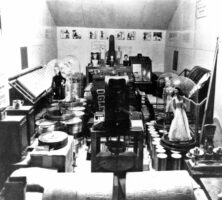Time capsules, sealed containers storing artifacts of the contemporary culture for retrieval in future decades or even millennia, first captured the imagination of the American public in 1936, when Thornwell Jacobs, president of Oglethorpe University in Atlanta, suggested the idea in a Scientific American magazine article.
Georgia, like all states, has numerous time capsules. They range from the very elaborate—a swimming-pool-sized chamber containing thousands of objects—to sealed cardboard boxes preserving family memorabilia. Although time capsules are traditionally buried, often in ceremonies that borrow from funeral ritual, indoor capsules are also popular, because they do not require weather- and decay-resistant containers.
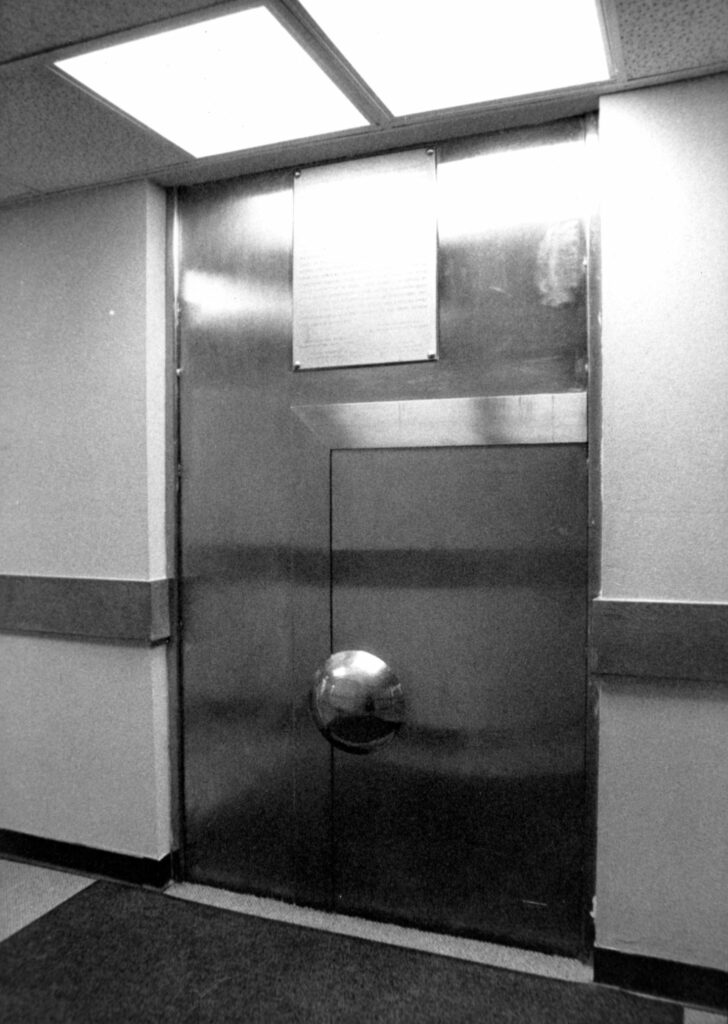
Courtesy of Oglethorpe University Archives
The best known of Georgia’s time capsules is Jacobs’s Crypt of Civilization at Oglethorpe University in Atlanta. The crypt, a converted indoor swimming pool, represents the “first successful attempt to bury a record of this culture for any future inhabitants or visitors to the planet Earth” (Guinness Book of World Records, 1990). Sealed in 1940, the crypt’s stainless-steel door is scheduled to open in the year 8113.
Indoor time capsules are popular as school projects to encourage class reunions. Holcomb Bridge Middle School in Alpharetta is the home of the Powaqqatsi Time Capsule (1992-2012). The name is taken from the Hopi Native American word for “life in transformation.” The container is a safe, and the contents have a theme of social conflict. Enclosed among other items is the Georgia flag in use at the time the capsule was sealed; the flag’s design features the controversial Confederate Stars and Bars. In Acworth the Frey Elementary School Time Capsule (1997-2012) commemorates the first year of a new building. The container is a pine hutch donated by the local Wal-Mart.
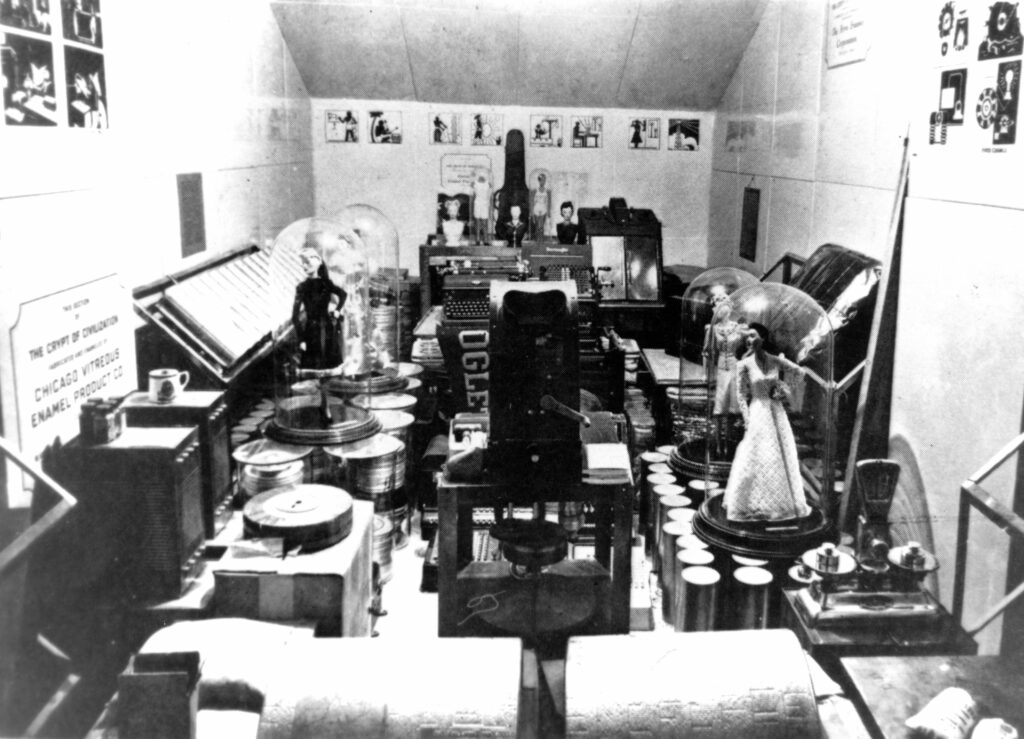
Courtesy of Oglethorpe University Archives
Among the capsule burials that borrow from funeral imagery is the Oglethorpe County Time Capsule (1993-2093) in Lexington, honoring local veterans, which is marked with a tombstone. Another civic project, the City of Winder Time Capsule (1993-2093), featured the burial of a sealed plastic water pipe in front of the town’s Public Safety Building. The Mount Nebo Baptist Church Time Capsule (2000-2100) in Atlanta is a buried child’s coffin.
Diverse groups in Georgia have organized time capsule projects. They include the Atlanta Typographical Union Local No. 48 Time Capsule (1985-2060) at the Southern Labor Archives of Georgia State University, the Ladies Garden Club Time Capsule (1991-2091) on the University of Georgia campus, the DeKalb Historical Society Time Capsule (1997-2022) at the old courthouse in Decatur, the Marietta Golden K Kiwanis Club Culture Capsule (1999-2100) at the East Cobb Senior Center, and the Macon Water Authority Time Capsule (2001-2051) at the Rocky Creek Plant.
There are also many personal and family time capsules in Georgia. The Good Luck Time Capsule (2001-2101) is a PVC pipe sealed for the descendants of Stephen and Janice Freniere and is buried at their home in Gainesville. The Stephen Edward Gubelman Time Capsule (1990-2006) and the Laura Elizabeth Gubelman Time Capsule (1993-2010) are simple cardboard boxes sealed by Stephen Gubelman in Marietta for his children, to be opened on their twenty-first birthdays.
A few Georgia specimens have already been unsealed. The Inter-Disciplinary Studies Time Capsule, for example, was buried in 1975 at the former DeKalb Community College South Campus. Consisting of a child’s coffin holding school artifacts, the capsule was unearthed twenty-five years later, as directed. Some of the items were later resealed with new artifacts in the Georgia Perimeter College Time Capsule (2001-2025), which is a wall safe at Decatur campus of Georgia State University Perimeter College. In 1990, on the fiftieth anniversary of the crypt’s sealing, the International Time Capsule Society was formed at Oglethorpe University. It studies the variety of time capsule projects worldwide.


